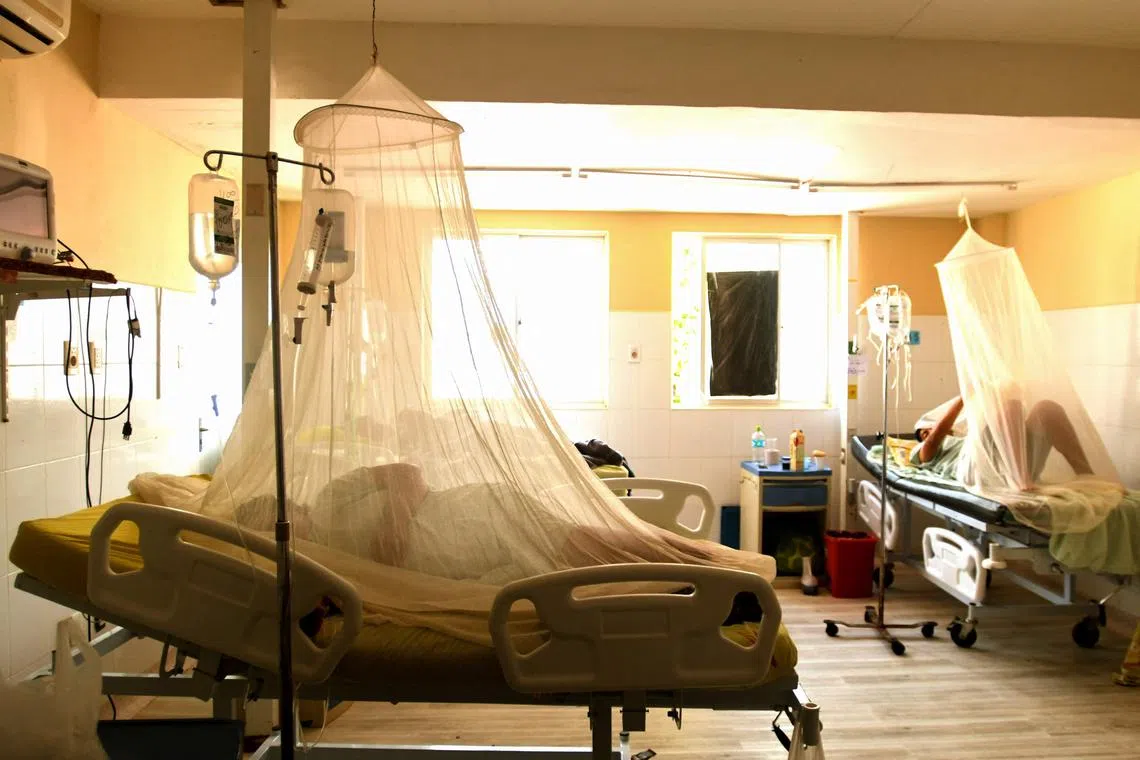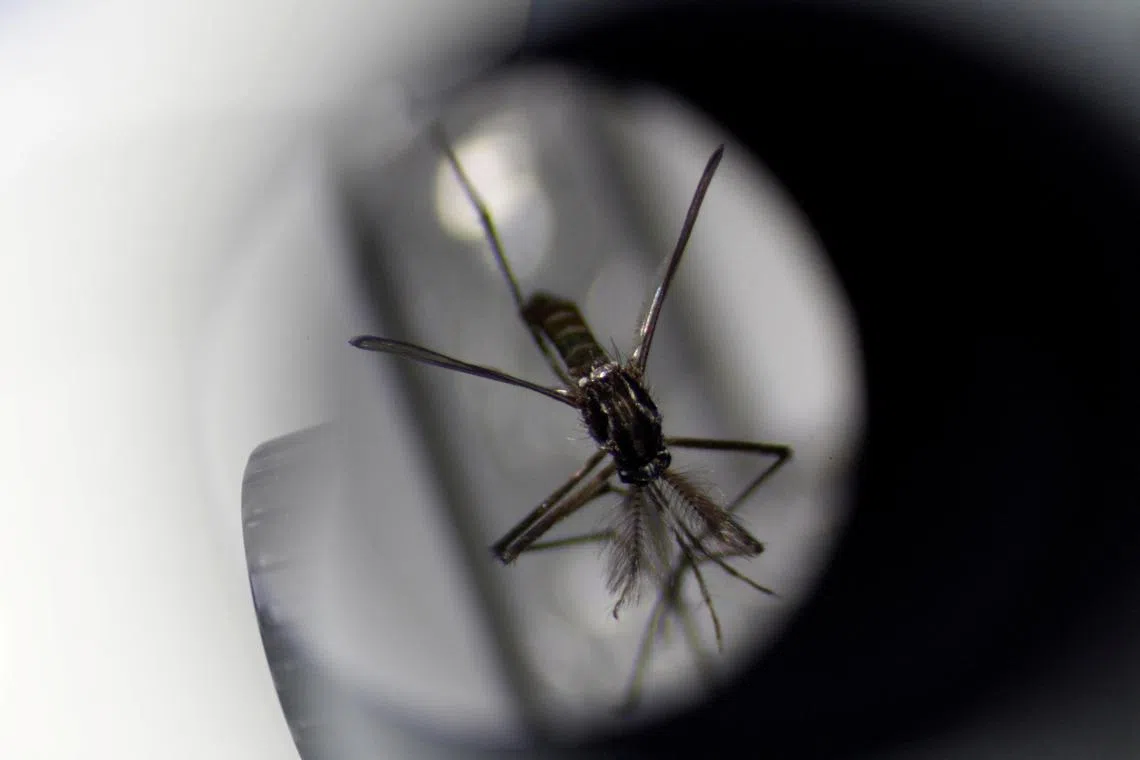France, rest of Europe could see more local dengue outbreaks as world warms
Sign up now: Get ST's newsletters delivered to your inbox

While dengue is common in warmer nations like Bolivia (above), rising temperatures are increasing its spread in nations with colder climates like France.
PHOTO: AFP
Follow topic:
France has been seeing a growing number of local outbreaks of dengue in what experts say may be climate change increasing the spread of a deadly tropical disease in countries with colder climates.
The Agence Regionale de Sante, France’s health policy agency, has reported three separate local dengue outbreaks between June and September 2022.
The National Library of Medicine (NLM), a biomedical research and data institute in Bethesda, Maryland, on the other hand, counted 65 cases in nine “transmission events” in the French regions of Occitanie, Paca and Corsica from January to October 2022.
In one case study to be presented this week to the European Congress of Clinical Microbiology and Infectious Diseases in Copenhagen, a 44-year-old Briton contracted dengue while travelling near Nice in September 2022.
She showed symptoms of dengue – fever, rashes, muscle pain and headache – a day after arriving in Britain from France, where she stayed with her family who all had the same symptoms.
‘Emerging health threat’
Dr Owain Donnelly, one of the authors of the report “Dengue in the south of France: an emerging health threat?”, said the woman’s case was part of the September 2022 outbreak that “highlights the rapidly changing epidemiology of dengue”.
“With climate change, particularly hotter temperatures and more rainfall, and increasing global trade and tourism, we may see more parts of Europe with the right combination of factors for dengue outbreaks,” he said.
Dengue – nicknamed breakbone fever – is transmitted by Aedes mosquitoes that also spread Zika and chikungunya.
Worldwide each year, there are up to 400 million cases of dengue infections. About 100 million are severe enough to cause symptoms, which may include fever, debilitating joint pain and internal bleeding.
There are an estimated 10,000 deaths from dengue every year.

Dengue – also nicknamed breakbone fever – is transmitted by Aedes mosquitoes that also spread Zika and chikungunya.
PHOTO: REUTERS
Dengue is common in parts of the world with warmer weather like Brazil and India. It is now endemic in more than 100 countries in South-east Asia, Africa, the Americas, the eastern Mediterranean and the western Pacific.
In recent years, though, it has been spreading to new areas, including Europe.
France, in particular, is seeing an “exceptional... evolving epidemiological situation”, the NLM said. Its local cases for 2022 surpassed the total recorded from 2010 to 2021.
One of the “transmission events” recorded – 34 cases in the municipalities of Saint-Jeannet and Gattieres, according to the NLM – had so far been “the largest ever documented in Europe”.
The French health authorities are warning of more cases to come.
It’s climate change
Climate change is feeding this spread in Europe, experts say.
“That’s the driver now,” Dr Rontgene Solante, an infectious disease expert with the San Lazaro Hospital in the Philippines, told The Straits Times.
He said “it is inevitable” that dengue may soon become endemic in France and other parts of Europe “because we’re seeing more hot days, more humid days that allow mosquitoes to survive and thrive” in places where they could not previously.
Warming temperatures shorten the time it takes for a mosquito to become a biting adult and accelerate the time between when a mosquito picks up a disease and is able to pass it on.
Aedes aegypti is particularly concerning. While other mosquito species will bite whatever is convenient, Aedes aegypti prefer to bite humans.

A worker from the Departmental Health Service fumigates a house to stem the spread of dengue in Caranavi, Bolivia, on Feb 16.
PHOTO: REUTERS
Warming temperatures also expand the range of mosquitoes, allowing them to breed in higher altitudes that otherwise would be too cold for them, and – due to shorter winters – lengthen the period when they can be active.
High humidity, meanwhile, increases the survival, feeding behaviour and egg development of Aedes aegypti, while excess precipitation, storms, flooding and rising sea level can increase their populations by providing the shallow, stagnant pools of water they need to reproduce.
Dr Solante said the dengue situation in nations that lie in the tropics and subtropics may only get worse as the world warms.
“We’re already seeing dengue in these places all year round,” he said.
A study published in the journal Nature Microbiology estimates that globally, more than two billion more people could be at risk for dengue in 2080 because of climate change.
Dr Solante said one upside is that more local outbreaks could spur wealthier nations like France to pour more resources and expertise into combating dengue with better vaccines and treatments.
The current dengue fever vaccine – Dengvaxia – is ineffective for most people and does not cover all types of dengue.


